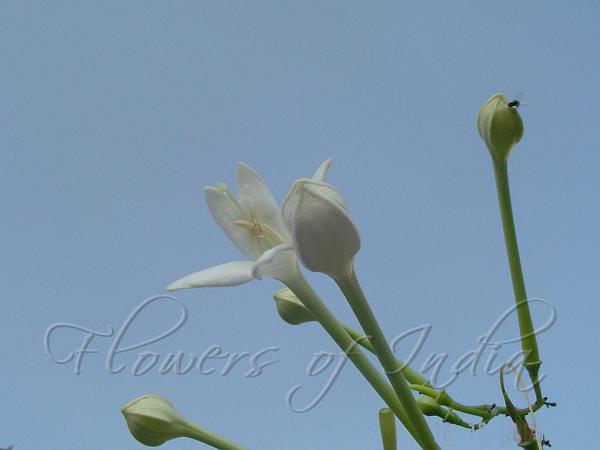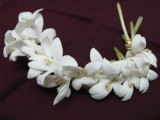|
| Indian Cork Tree |
|

|

| File size | 213976 |
| Original date | 12/16/06 9:05 PM |
| Resolution | 2048 x 1360 |
| Flash | Flash did not fire |
| Focal length | 6.3mm |
| Exposure time | 1/320s |
| Aperture | 8.0 |
| Focus Distance | |
| Metering Mode | Spot |
| Camera make | SONY |
| Camera model | DSC-P52 |
| Sensor type |
|
|
|
|
Photo: |
Botanical name: Millingtonia hortensis Family: Bignoniaceae (Jacaranda family)

Photo: Mrunal. |
Indian Cork Tree is cultivated in most
parts of India, both in gardens and
avenues. Tall and straight, with comparatively few branches, its popularity
lies in its ornamental value. It is a fine tree, fast growing, but with
brittle wood, liable to be damaged by storms. In favourable positions it
can grow to 24 m tall. The ashy bark is cracked and furrowed and the
numerous fissures make removal of the cork an easy matter. It is used as an
inferior substitute for true cork. From April until the rains and again in
November and December, a profusion of silvery-white, delightfully fragrant
flowers crown the foliage. Upright open clusters with arching blooms
terminate every branchlet. Each flower is a tiny bell-shaped calyx, a long
slender tube of palest green dividing into four waxy, white petals and
several conspicuous yellow anthered stamens. Many flowers are delicately
tinted with rose. As the flowers are short-lived, the flower sprays mostly
consist largely of long whitish buds, while the ground below is spangled
with innumerable little stars.
Between January and March the leaves are
shed and renewed during April and May, although the tree is never quite
naked. The long leaves bear two or three widely spaced pinnae, each with
five or seven smooth leaflets, oval, pointed and
slightly round-toothed. Each is from 2.5 to 7.5 cm. long. Sometimes the
lower pinnae, are again divided and bear one pair of
three leaved pinnae, one or two pairs of leaflets and one leaflet at the
end. The fruit is very long and narrow, pointed at both ends and contains
thin flat seeds. Trees do not seed very easily in India.
The long, fragrant flowers are commonly woven into
an ornamental braid called Veni in Maharashtra.
| Identification credit: Prashant Awale | Photographed in Maharashtra & Gujarat. |
• Is this flower misidentified? If yes,